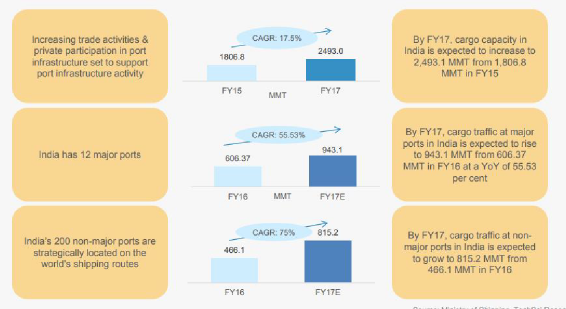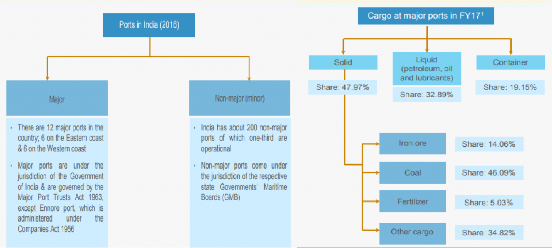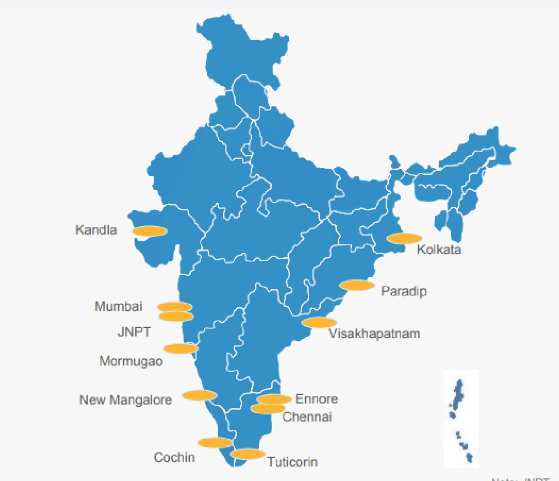6. Ports and Shipping
The cargo traffic of Indian ports increased at a CAGR of 7.4 per cent during FY07–17. Cargo traffic in 2017 at major ports is expected to reach 943.1 MMT. Non-major ports are gaining shares & a major chunk of traffic has shifted from major ports to non-major ports. The contribution of non-major port’s traffic to total traffic rose to 43.5 per cent in FY16 from 28.6 per cent in FY07. Cargo traffic at non-major ports stood at 466.1 MMT in FY16.

Today India has 13 major ports and 200 notified non-major ports along the coastline and islands. Major ports are administered by the union government under the Major Port Trusts Act of 1963, with one exception, Ennore Port, which is administered under the provisions of the Companies Act, 1956. Non-major ports are administered by nine maritime states and three union territories within their respective coastlines.


In keeping with general policy of economic liberalisation, the port sector was opened to private sector participation in 1997. Accordingly, a regulatory body known as Tariff Authority for Major Ports (TAMP) was introduced for regulating both vessel-related and cargo-related tariffs. TAMP was also made responsible for regulating rates for lease of properties in respect of major port trusts and private operators. Currently 100% FDI is allowed in the shipping sector in India.
